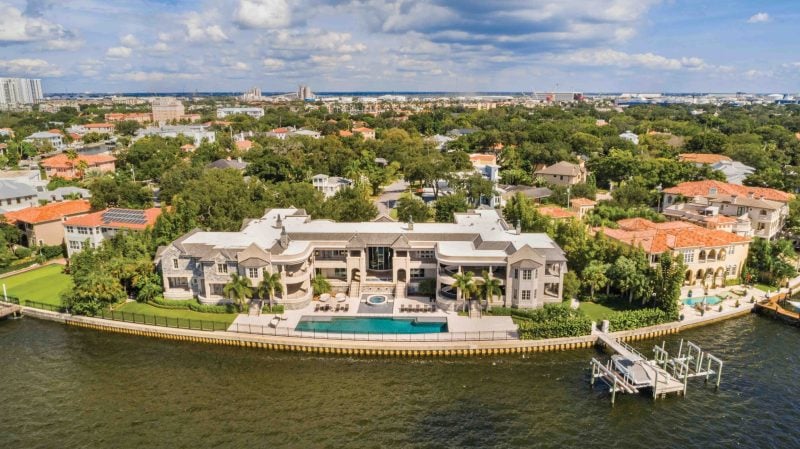The 30 Best Places to Live in the U.S. – Quality of Life, Affordability, and Growth
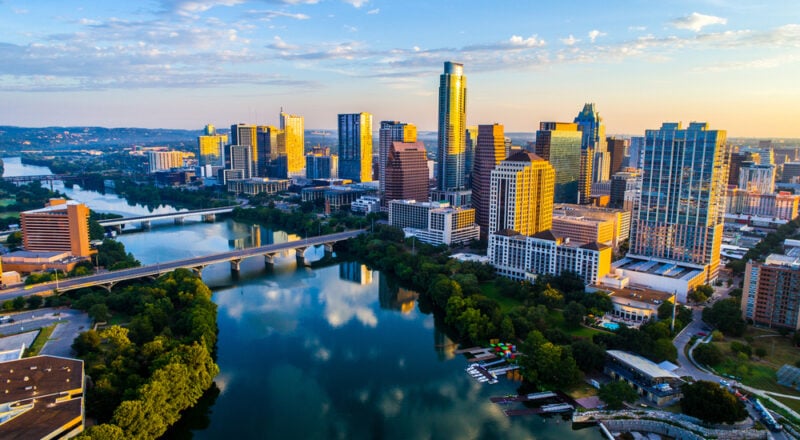
Choosing the right place to live involves weighing multiple factors that impact daily life and long-term satisfaction. From job opportunities and cost of living to climate and cultural amenities, each city offers a unique combination of advantages and trade-offs.
This comprehensive analysis examines thirty exceptional cities across the United States, evaluating each location based on key livability factors to help prospective residents make informed decisions.
The selected cities represent diverse regions and lifestyles, ranging from vibrant college towns and emerging tech hubs to historic coastal communities and outdoor recreation destinations.
Each location demonstrates strong performance across multiple criteria that contribute to quality of life and resident satisfaction.
Here are the 30 best places to live in the U.S.
30. Savannah, Georgia

Savannah earned recognition as one of the best places to live in the U.S. for 2025-2026 according to recent rankings. The historic city combines Southern charm with modern amenities and economic opportunities.
The Savannah metro area benefits from its major port, thriving tourism industry, and expanding tech sector. This diverse economic foundation provides residents with varied employment options and stability.
Residents enjoy year-round mild weather and easy access to Georgia’s coastal beaches. The city maintains lower living costs compared to similar coastal destinations like Charleston.
Savannah’s historic districts feature well-preserved architecture and famous landmarks including River Street and Forsyth Park. The city offers rich cultural attractions, museums, and renowned cuisine that reflect its deep historical roots.
The area provides suburban comfort while maintaining proximity to urban amenities. Public schools, housing availability, and community diversity contribute to Savannah’s appeal for families and professionals seeking quality of life in the Southeast.
29. Bozeman, Montana
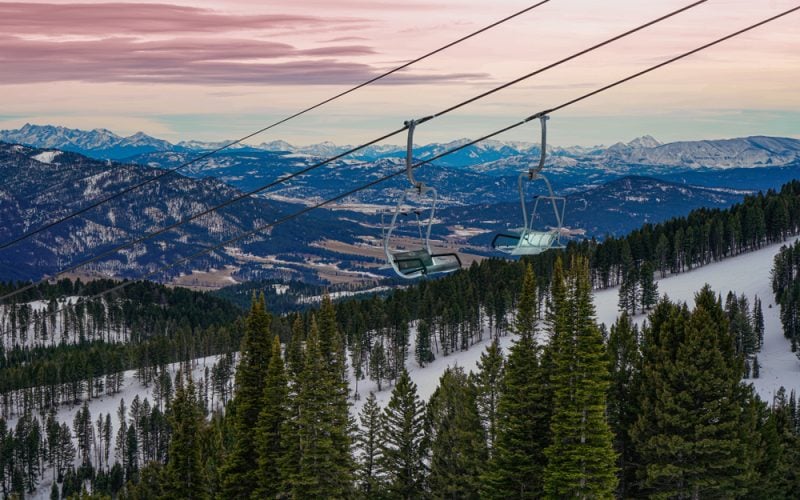
Bozeman consistently ranks among Montana’s top places to live. The city placed second in multiple 2025 rankings for best Montana locations.
Home to Montana State University, Bozeman earned recognition as one of the best small college towns in America. The university brings educational opportunities and cultural activities to residents.
The city ranks highly for social and civic capital, measuring community engagement and quality of life factors. Bozeman placed 23rd nationally in comprehensive livability rankings.
Housing costs present a significant consideration for potential residents. Average rent reaches approximately $2,450 monthly, reflecting the area’s growing popularity and demand.
Bozeman attracts newcomers seeking outdoor recreation and mountain lifestyle. The city experienced notable population growth, particularly since 2020, as people relocated for its natural amenities and quality of life.
28. Santa Fe, New Mexico

Santa Fe serves as New Mexico’s capital and ranks among the state’s most distinctive cities. The city features adobe architecture and vibrant art galleries throughout its walkable downtown core.
Residents enjoy year-round mild weather that consistently ranks among the nation’s best. The high desert climate provides over 300 sunny days annually with low humidity.
Santa Fe’s cultural scene centers around numerous museums, galleries, and the renowned Santa Fe Opera. Local restaurants serve authentic New Mexican cuisine featuring green chile and regional specialties.
The city maintains strong Native American and Hispanic influences visible in architecture, food, and local traditions. Outdoor enthusiasts access hiking trails, skiing, and recreational activities in nearby mountains.
Housing costs exceed New Mexico’s average, reflecting the city’s desirability and tourist appeal. The job market focuses on government, tourism, arts, and healthcare sectors.
27. Jackson, Wyoming
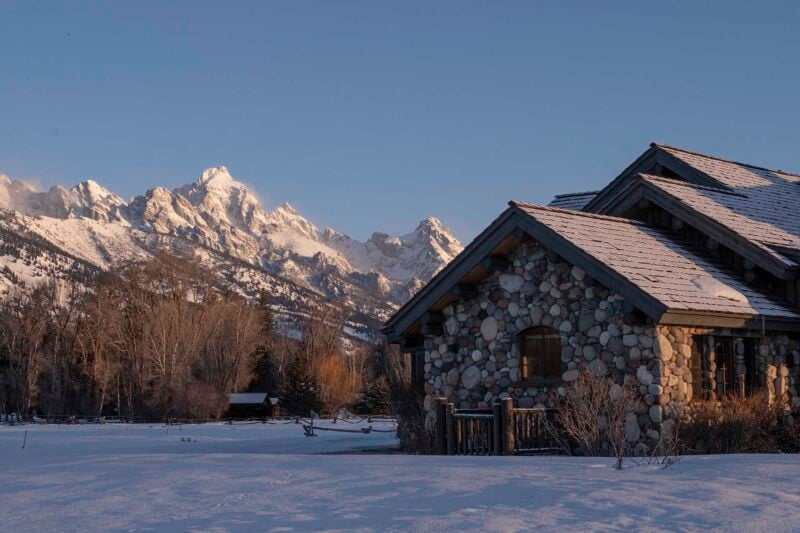
Jackson stands out as a premier mountain town in northwestern Wyoming’s Teton County. The city ranks as the 8th best place to live in the state with an overall livability score of 75.
This small community offers residents economic stability and low crime rates. The town provides numerous job opportunities despite its modest size.
Jackson’s location near Grand Teton National Park creates stunning natural surroundings. The area attracts outdoor enthusiasts year-round with its mountain recreation opportunities.
Housing costs vary significantly across different neighborhoods within the town. The real estate market reflects high demand for this desirable location.
The economy performs well, ranking 11th best among Wyoming cities. Local amenities support both residents and the tourism industry that drives much of the area’s prosperity.
26. Lincoln, Nebraska
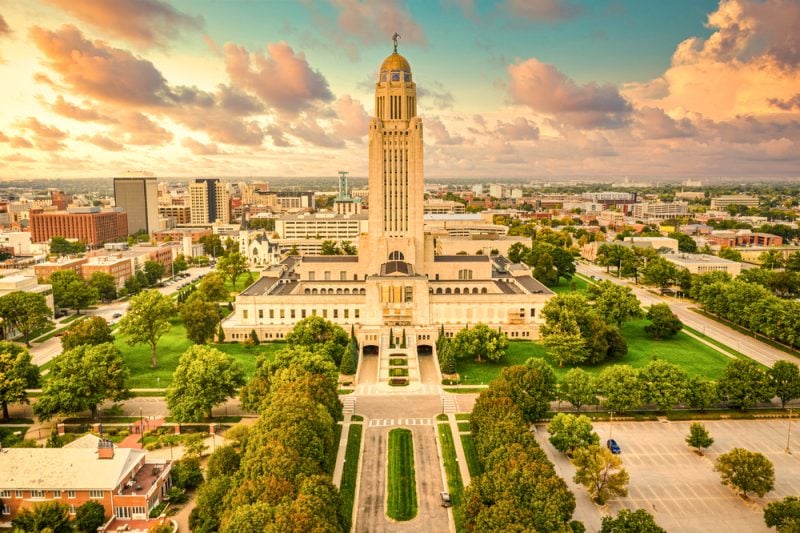
Lincoln serves as Nebraska’s capital city and the state’s second-largest urban center. The city combines government functions with a thriving university atmosphere centered around the University of Nebraska-Lincoln.
The historic Haymarket District anchors downtown Lincoln with shops, restaurants, and cultural venues. This area provides residents with walkable entertainment and dining options.
Lincoln ranks highly in multiple livability studies due to its reasonable cost of living and quality amenities. The city offers numerous museums, parks, and libraries for residents to enjoy.
Popular neighborhoods include Wilderness Hills in south Lincoln, which features modern homes and quality schools. Woods Park provides a central location near the university with both historic and contemporary housing options.
The city’s economy benefits from its role as the state capital and presence of the major university. This combination creates stable employment opportunities across government and education sectors.
25. Spokane, Washington

Spokane has earned recognition as one of the top 100 places to live in the United States. The city ranked 49th on Livability.com’s prestigious list, reflecting its growing appeal among residents and newcomers.
The Pacific Northwest city offers an excellent quality of life score of 7.3 out of 10 according to BestPlaces. This rating places Spokane among America’s most livable cities.
Housing costs remain reasonable compared to other Western cities. The real estate market provides diverse options across various neighborhoods, from downtown areas to suburban communities.
Spokane’s crime rates are generally lower in desirable neighborhoods. The city features strong public schools and local amenities that enhance daily living.
Employment opportunities continue to expand across multiple sectors. The combination of affordable living costs and job availability makes Spokane attractive for families and professionals seeking quality living in the Northwest.
24. Sioux Falls, South Dakota
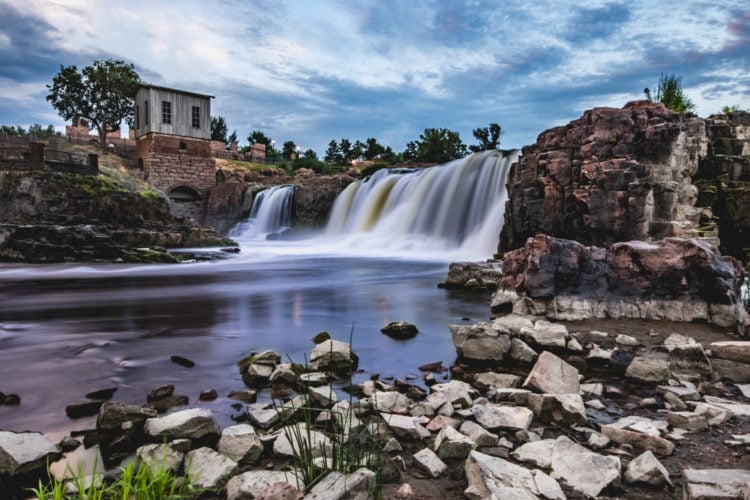
Sioux Falls ranks as one of the nation’s most livable cities, earning recognition for its strong economy and family-friendly environment. The city offers abundant job opportunities across diverse industries.
Falls Park showcases the city’s natural beauty, featuring the iconic Big Sioux River waterfalls. The park ranks among the top 25 urban parks nationwide.
Residents enjoy extensive bike trails, parks, and recreational activities throughout the metropolitan area. The city balances big-city amenities with small-town charm.
Sioux Falls provides excellent educational opportunities and multiple healthcare options. The cultural and entertainment scene offers diverse activities for all ages.
The median household income reaches $76,226, with a homeownership rate of 67%. Property values remain reasonable compared to other metropolitan areas.
The city’s location along the Big Sioux River and rolling plains creates an attractive setting for establishing roots.
23. Chattanooga, Tennessee

Chattanooga consistently earns recognition as one of Tennessee’s top places to live. The city recently moved up 26 spots in the Milken Institute Best-Performing Cities rankings, jumping from 72nd to 46th place.
The metro area receives high marks for livability with a score of 73 out of 100. Its cost of living index reaches an impressive 86 out of 100, making it an affordable option for residents.
Money Magazine named Chattanooga one of the 50 Best Places to Live in the U.S. The city also appears on Livability’s Top 100 Places to Live list.
Beyond affordability, Chattanooga offers cultural attractions including the Hunter Museum of American Art. The city features over 100 permanent art installations throughout its neighborhoods.
The scenic Tennessee location provides residents with natural beauty alongside urban amenities. Multiple studies continue to rank Chattanooga among the state’s most desirable places to call home.
22. Greenville, South Carolina

Greenville consistently ranks among America’s top places to live, earning the fourth spot in U.S. News & World Report’s 2024 rankings. The city combines urban amenities with natural beauty in the foothills of the Blue Ridge Mountains.
The downtown area has received national recognition for its revitalization and walkability. Falls Park serves as a centerpiece, offering scenic waterfalls and green space in the heart of the city.
Greenville’s economy remains strong and diverse, supporting job growth across multiple sectors. The cost of living stays reasonable compared to other highly-ranked cities, with average home prices around $336,731.
The city offers excellent schools and family-friendly neighborhoods. South Carolina’s low property tax rates provide additional financial benefits for homeowners.
Greenville balances small-city charm with big-city cultural offerings, including restaurants, arts venues, and outdoor recreation opportunities.
21. Burlington, Vermont

Burlington stands as Vermont’s largest city with approximately 45,000 residents. The Queen City offers a unique blend of urban amenities and small-town charm.
The city provides access to the University of Vermont and numerous tech companies. This creates diverse employment opportunities in education, healthcare, and technology sectors.
Burlington residents earn around $50,000 annually, which exceeds rural Vermont averages of $35,000-$40,000. The presence of major institutions supports higher median incomes.
Both Burlington and South Burlington rank among the nation’s safest places to live according to recent safety reports. The area scores high in home and community safety metrics.
The city offers access to Lake Champlain and the Green Mountains. Residents enjoy outdoor recreation opportunities including winter sports and water activities.
Burlington’s progressive culture attracts young professionals and families. The combination of educational institutions, natural beauty, and community safety makes it Vermont’s top urban destination.
20. Fort Collins, Colorado

Fort Collins sits at the foothills of the Rocky Mountains, offering residents stunning natural beauty and extensive outdoor recreation opportunities. The city features 29 miles of hiking and biking trails, making it ideal for active lifestyles.
The community has earned recognition as one of the nation’s top places to live. Fort Collins boasts a thriving craft beer scene and a flourishing arts culture that attracts residents and visitors alike.
Education and healthcare receive top ratings in the city. The population of 169,705 benefits from award-winning schools and quality medical facilities.
Fort Collins serves as both an agricultural center and high-tech hub, ranking as Colorado’s fourth-largest community. The city offers abundant restaurants, coffee shops, and parks throughout its neighborhoods.
Most residents own their homes in this dense suburban environment. The historic district provides additional charm with its collection of local shops and dining establishments.
19. Provo, Utah

Provo offers residents a dense suburban environment with strong community appeal. The city has a population of 114,303 and consistently ranks among Utah’s top places to live.
Most residents rent their homes in this college town atmosphere. Young families and professionals make up a significant portion of the population, creating a vibrant community dynamic.
The city features numerous parks and outdoor recreational opportunities. Provo’s location provides easy access to mountains and natural areas for hiking and outdoor activities.
Public schools in Provo perform above average compared to state standards. The presence of Brigham Young University contributes to the city’s educational focus and youthful energy.
Housing remains more affordable than many comparable cities. Job opportunities exist across various sectors, supported by the university and local businesses.
Provo has received recognition as one of the best performing cities in recent national rankings.
18. Ann Arbor, Michigan

Ann Arbor consistently ranks among America’s top cities for quality of life. The city earned recognition as one of the Top 100 Best Places to Live in 2025 according to multiple national rankings.
Home to the University of Michigan, Ann Arbor combines college town energy with urban amenities. The prestigious public university brings cultural events, educational opportunities, and a vibrant atmosphere to the community.
Over 90% of residents live within a 10-minute walk of a public park. The city excels in healthcare access and local amenities that enhance daily living.
Ann Arbor offers tree-lined neighborhoods and excellent dining options. The blend of innovation and nature creates an appealing lifestyle for residents of all ages.
The city ranks 19th on U.S. News Best Places to Live in America for 2024-25. Its strength lies in education quality, diverse community, and comprehensive municipal services.
17. Knoxville, Tennessee

Knoxville ranks as Tennessee’s third-largest city and consistently earns recognition for its affordability. The city offers below-average living costs while maintaining high quality of life standards.
The presence of the University of Tennessee contributes to the city’s vibrant atmosphere and educational opportunities. This creates a diverse community that blends academic energy with southern charm.
Knoxville’s economy shows promising growth potential. Analysts predict 4.4% job growth over the next four years, supported by recent federal investment.
The city provides excellent access to outdoor recreation in eastern Tennessee. Residents enjoy proximity to the Great Smoky Mountains and numerous hiking trails.
Housing costs remain reasonable compared to national averages. This affordability factor makes Knoxville attractive for families and young professionals seeking value.
The downtown area features walkable neighborhoods with local restaurants and cultural venues. Southern cuisine and historic architecture add character to the urban landscape.
16. Boulder, Colorado

Boulder consistently ranks among America’s top places to live. U.S. News & World Report named it the #1 Best Place to Live for 2021-2022, marking the second consecutive year in the top position.
The city earned the #10 spot in the 2024-2025 rankings. National Geographic has also recognized Boulder as the Happiest City in America.
Located in the foothills of the Rocky Mountains, Boulder offers over 200 miles of trails for hiking, biking, and climbing. The natural setting provides residents with extensive outdoor recreation opportunities.
The rankings consider factors including job market strength, housing affordability, quality of life, and desirability. Boulder’s excellent schools and universities contribute to its high ratings.
The city maintains a vibrant economy and diverse culture. Its combination of natural beauty, educational institutions, and economic opportunities attracts new residents consistently.
15. Charleston, South Carolina
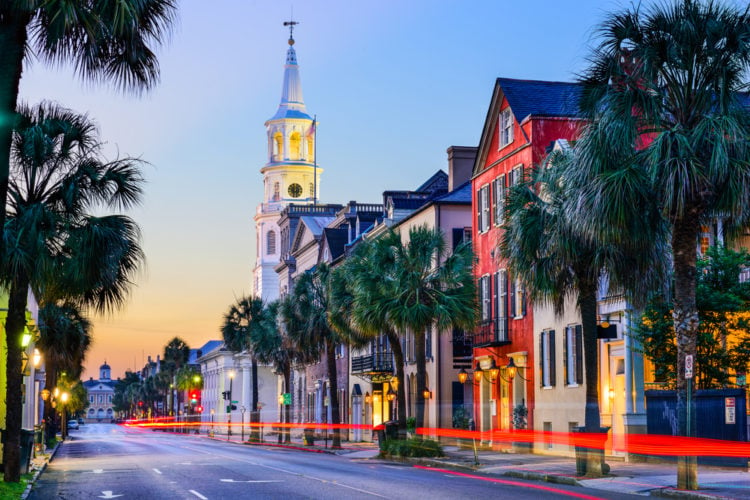
Charleston consistently ranks among the South’s premier cities for the ninth consecutive year. The city offers rich culture, exceptional food, and deep historical significance that attracts residents nationwide.
The job market remains strong with median household income exceeding the national average. Employment opportunities span various industries, making it attractive for career-focused individuals.
Charleston’s neighborhoods provide incredible variety and unique personalities. From historic districts to modern developments, residents find communities that match their preferences and lifestyles.
The city features vibrant entertainment and diverse dining options. Residents enjoy access to beaches, warm weather year-round, and hundreds of nearby golf courses throughout South Carolina.
Housing costs have risen in recent years, reflecting the city’s growing popularity. Despite this challenge, Charleston maintains its appeal through quality amenities and coastal living benefits.
14. Des Moines, Iowa
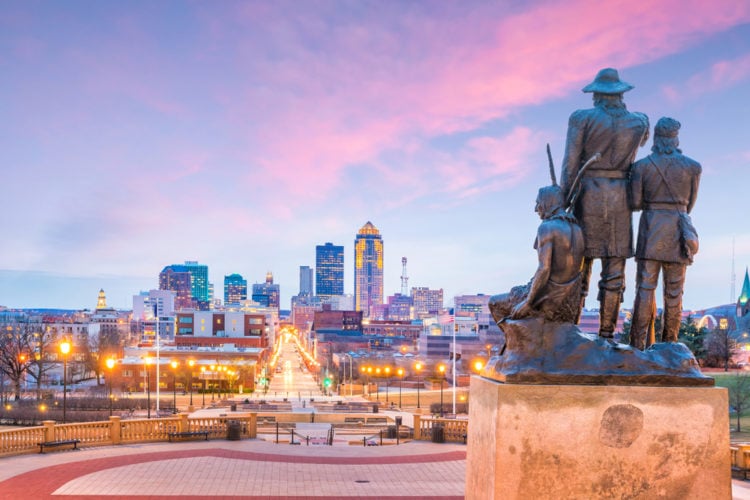
Des Moines ranks as one of the most livable cities in the Midwest. The Iowa capital offers affordable housing costs and strong job opportunities in insurance and finance sectors.
The city provides excellent public schools and family-friendly neighborhoods. Ankeny, a nearby suburb, consistently ranks among the best places to live nationally.
Des Moines features extensive bike trails and outdoor recreation options. The downtown area has experienced significant revitalization with new restaurants and entertainment venues.
The metro area maintains low crime rates compared to similar-sized cities. Residents enjoy short commute times and minimal traffic congestion.
Recent rankings show Des Moines at number 55 on national best places lists. The city scores particularly well for retirement destinations and overall quality of life metrics.
13. Colorado Springs, Colorado

Colorado Springs ranks among America’s most desirable cities to live in. U.S. News & World Report placed the city third overall in their 2024-25 Best Places to Live ranking.
The second-largest city in Colorado offers modern amenities without the traffic congestion of larger metropolitan areas. Residents enjoy access to urban resources while maintaining a manageable city size.
Natural attractions define much of the area’s appeal. Garden of the Gods and Pikes Peak provide abundant outdoor recreation opportunities including hiking, mountain biking, and rock climbing.
Cultural amenities enhance the quality of life. The Cheyenne Mountain Zoo, U.S. Olympic Training Center, and various museums serve residents and visitors throughout the year.
Top neighborhoods include Cordera and Gleneagle for those seeking premium living options. The city accommodates various budgets across its different districts and communities.
12. Columbus, Ohio
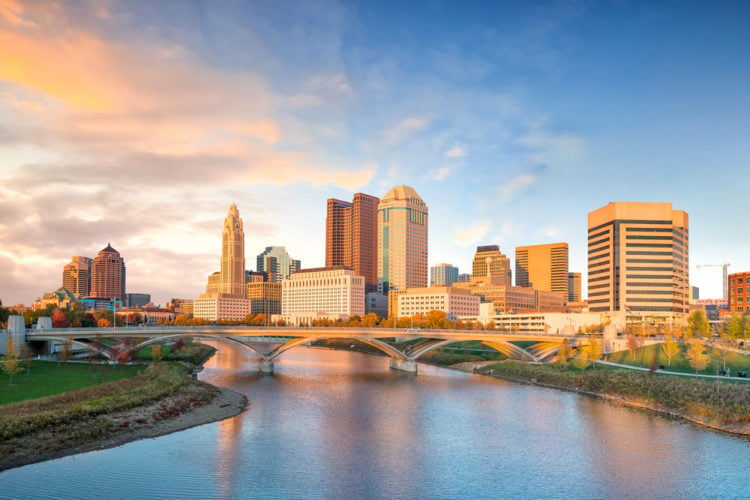
Columbus ranks among the top three best places to live in Ohio according to recent studies. The city earned recognition in the top 150 best places to live nationwide.
The capital city scores well in economic growth potential and job market health. Columbus offers a favorable balance between average salary and cost of living compared to other major metropolitan areas.
Healthcare quality and education options rank strongly throughout the metro area. The city maintains a lower crime rate than many comparable urban centers.
Columbus has experienced steady population growth and development. The metropolitan area includes several highly-rated suburbs like Hilliard, which has reached over 37,000 residents.
Rankings consider factors including happiness levels, healthcare access, and economic opportunities. Columbus consistently performs well across multiple categories in national livability assessments.
11. Durham, North Carolina
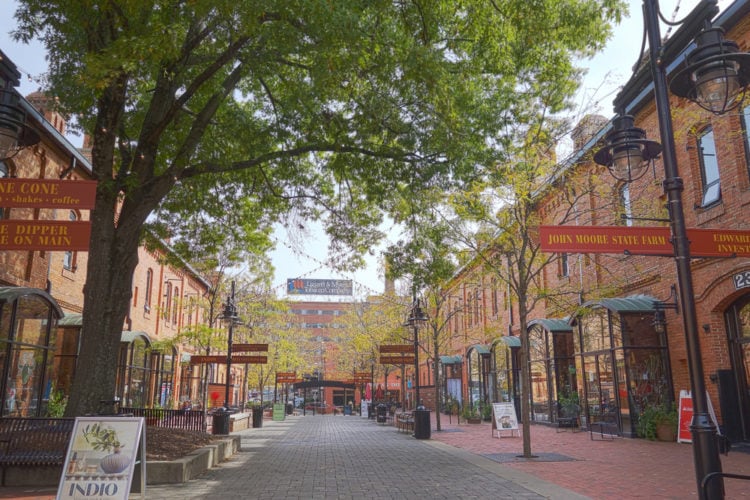
Durham stands as the northern point of North Carolina’s Research Triangle, home to prestigious universities and research institutions. The city ranks consistently among the nation’s best places to live in 2025.
Duke University anchors the area’s academic reputation. The Research Triangle designation reflects Durham’s role alongside Raleigh and Chapel Hill in creating a hub for innovation and education.
Downtown Durham offers museums, art galleries, theaters, and shops. The American Tobacco Campus provides live music venues and entertainment options for residents.
Duke Gardens attracts visitors seeking outdoor recreation. The Bennett Place Historic Site preserves Civil War history for those interested in the area’s past.
Durham’s population has grown significantly from its origins as a small village. The city now serves as North Carolina’s fourth-largest municipality, providing amenities that appeal to families and professionals.
10. Naples, Florida

Naples, Florida claimed the top spot in U.S. News & World Report’s Best Places to Live 2024-2025 ranking. The Gulf Coast city edged out Boise, Idaho, and Colorado Springs, Colorado for the number one position.
The Southwest Florida destination frequently appears on national “best” lists. Publications consistently recognize Naples for its weather conditions and quality of life standards.
Naples offers pristine beaches along the Gulf of Mexico and world-class amenities. The city attracts wealthy retirees and seasonal residents known as snowbirds.
The ranking considers factors like job market strength, cost of living, and overall value. Naples scored well across these categories while maintaining its coastal appeal.
The city jumped significantly from its previous ranking of sixth place in 2023-24. This marked the second consecutive recognition for Naples in major national surveys.
9. Huntsville, Alabama

Huntsville claimed the top spot in U.S. News & World Report’s Best Places to Live rankings for 2022-2023. The city scored high across multiple factors including job market strength, housing affordability, and quality of life.
The metro area has a population under 500,000, making it smaller than many ranked cities. Despite its size, Huntsville offers significant economic opportunities.
The aerospace and defense industry drives much of the local economy. Major employers provide stable, high-paying jobs that attract skilled workers to the region.
Housing costs remain relatively affordable compared to other top-ranked cities. This affordability factor contributes significantly to Huntsville’s high livability scores.
The city ranks as Alabama’s sixth most populous and maintains strong scores on livability indices. Crime rates tend to be lower in the most desirable neighborhoods, though housing quality varies across different areas of the city.
8. Fayetteville, Arkansas

Fayetteville consistently ranks among America’s top places to live. U.S. News & World Report has included the city in its top 10 for eight consecutive years, with a current ranking of 10th nationwide.
The city benefits from a strong economy anchored by major employers like Walmart and Tyson Foods in northwest Arkansas. The Milken Institute recognized Fayetteville as a top-performing U.S. city in 2024 for its population growth and job creation.
Founded in 1828, Fayetteville serves as an important commercial center in Washington County. The University of Arkansas calls the city home, contributing to its educated population and vibrant atmosphere.
Residents enjoy access to outdoor recreation at nearby Devil’s Den State Park and the city’s scenic hiking trails. The rolling hills and woodlands of the region provide a picturesque setting for this medium-sized metro area.
7. Madison, Wisconsin

Madison stands out as one of America’s most livable cities. The state capital combines affordability with quality of life in a way few other places match.
The city receives high marks for its cost of living. Housing remains accessible compared to other top-ranked cities across the nation.
Madison offers extensive outdoor recreation opportunities. Residents enjoy 200 miles of trails for hiking, biking, and winter activities throughout the area.
The downtown farmers market draws visitors year-round. Free cultural attractions and summer concerts provide regular entertainment options for all ages.
Lake access defines much of Madison’s character. The city sits between two lakes, creating natural beauty and recreational possibilities.
The University of Wisconsin anchors the local economy. This provides job stability and cultural enrichment through academic programs and events.
Madison consistently appears on best places to live rankings. The combination of affordability, recreation, and community makes it attractive to many residents.
6. Portland, Maine

Portland ranks eighth among the 150 most populous U.S. cities according to U.S. News & World Report. The coastal city earned recognition as the safest place to live in the country.
Maine’s largest city balances urban amenities with natural beauty. Portland features a growing art museum collection and unique attractions like the International Cryptozoology Museum.
The city scored high for quality of life, ranking ninth nationally. Portland’s walkable downtown and proximity to both mountains and ocean attract residents seeking outdoor recreation.
Housing costs remain a concern despite the city’s accolades. The metro area offers strong job markets and educational opportunities through institutions like the University of Southern Maine.
Portland’s food scene centers on fresh seafood and local ingredients. The Old Port district provides historic charm with cobblestone streets and 19th-century architecture.
5. Minneapolis, Minnesota
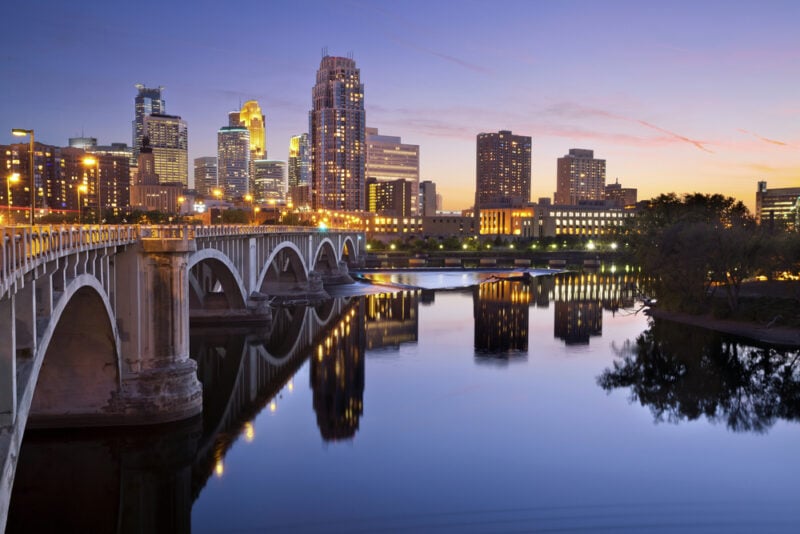
Minneapolis ranks as the 94th best place to live in America according to U.S. News & World Report. The city combines big-city amenities with an approachable Midwestern character.
Residents enjoy access to world-class museums, professional sports stadiums, and diverse entertainment venues. The Twin Cities metro area offers extensive cultural and culinary opportunities.
Minneapolis features abundant outdoor recreation with numerous parks and lakes throughout the region. The city maintains a vibrant arts and culture scene that attracts residents and visitors alike.
The local economy provides strong job opportunities across multiple industries. The median household income reflects the area’s economic stability and growth potential.
The city offers the benefits of urban living while maintaining Minnesota’s characteristic friendly atmosphere. Minneapolis successfully balances metropolitan amenities with recreational access to the state’s natural landscapes.
4. Boise, Idaho

Boise stands out as Idaho’s capital and economic hub in the scenic Treasure Valley. The city combines urban amenities with easy access to outdoor recreation across thousands of acres of protected reserves.
The local job market remains strong, attracting professionals from various industries. Housing costs stay relatively affordable compared to other major Western cities.
Residents enjoy a balanced lifestyle with abundant hiking, skiing, and river activities nearby. The Boise River runs through the city center, providing greenway trails and recreational opportunities.
The city maintains low crime rates and family-friendly neighborhoods. Public schools serve the community well, contributing to Boise’s appeal for families.
Downtown Boise offers restaurants, cultural venues, and entertainment options. The airport provides connections to major cities across the region.
Winter temperatures average in the 30s, while summers reach the 80s and 90s. The area receives moderate precipitation with sunny skies most of the year.
3. Denver, Colorado

Denver ranks 40th in U.S. News Best Places to Live rankings for 2025, recovering from its dramatic drop to 99th place the previous year. The Mile High City previously held the second position in 2020.
The metropolitan area offers diverse neighborhoods suited for families, young professionals, and outdoor enthusiasts. Housing costs vary significantly across different districts, providing options for various income levels.
Denver’s proximity to the Rocky Mountains makes it attractive for residents who enjoy skiing, hiking, and other outdoor activities. The city maintains a strong job market across multiple industries including technology and healthcare.
Public transportation connects major neighborhoods through light rail and bus systems. The airport serves as a major hub for domestic and international travel.
Crime rates and school quality differ between neighborhoods, making research important for potential residents. The city experiences over 300 days of sunshine annually despite its elevation of 5,280 feet above sea level.
2. Raleigh, North Carolina

Raleigh has earned recognition as one of America’s top places to live. The city serves as North Carolina’s state capital and anchors the famous Research Triangle region.
Home to North Carolina State University, Raleigh attracts students and professionals alike. The Research Triangle hosts major tech and medical companies, including Pfizer, creating diverse employment opportunities.
The city ranks highly for quality of life and growth potential. Recent rankings place Raleigh among the fastest-growing places in the United States.
Residents benefit from a balanced cost of living compared to other major metropolitan areas. The city offers strong public schools and safe neighborhoods throughout the region.
Raleigh’s location provides access to both urban amenities and outdoor recreation. The surrounding area includes highly-rated suburbs like Cary, which consistently ranks among the nation’s best places to live.
1. Austin, Texas
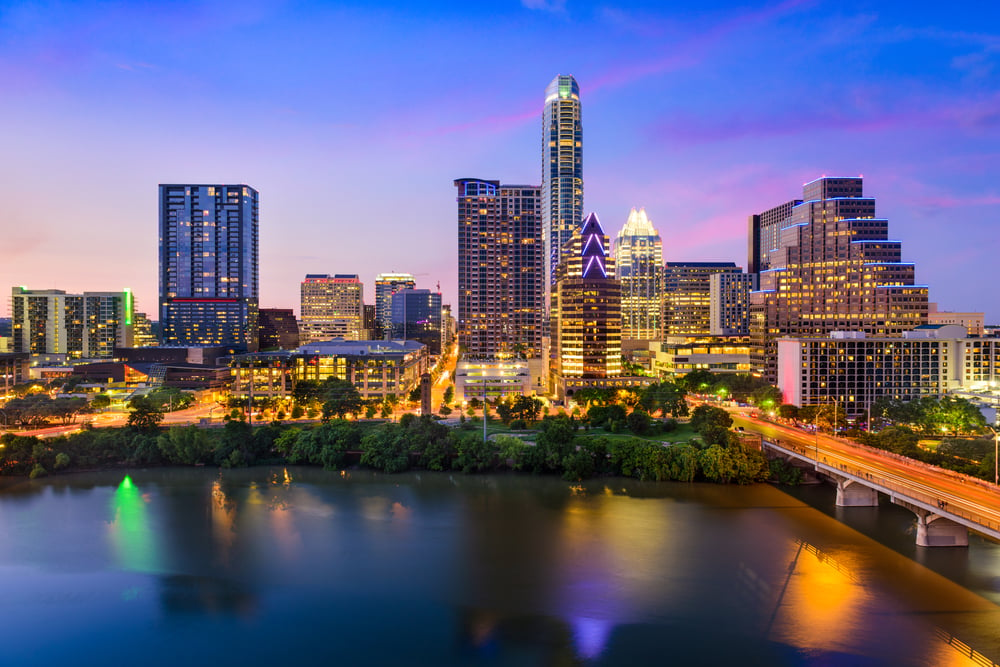
Austin consistently ranks among the top places to live in the United States. The Texas capital earned the number 9 spot in U.S. News & World Report’s 2024-2025 Best Places to Live rankings.
The city combines a thriving technology sector with a renowned music scene. This blend creates unique opportunities for both career growth and cultural experiences.
Austin offers diverse neighborhoods that cater to different lifestyles and preferences. Residents can choose from historic districts, modern developments, and suburban communities in the surrounding area.
The city’s job market attracts professionals from across the country. Major tech companies and startups have established significant presences in the region.
Outdoor recreation opportunities abound throughout the area. Parks, lakes, and hiking trails provide residents with numerous options for staying active.
Austin’s distinctive culture emphasizes a relaxed approach to urban living. This atmosphere appeals to newcomers seeking both professional opportunities and quality of life improvements.
Key Criteria for Evaluating the Best Places to Live
Selecting an ideal place to live requires careful evaluation of multiple factors that directly impact daily life and long-term satisfaction. The most critical considerations include housing affordability, educational quality, job market strength, healthcare accessibility, and recreational opportunities.
Cost of Living Considerations
Housing costs typically represent the largest expense for most residents, making affordability a primary factor in location decisions. Median home prices and rental rates vary significantly across metropolitan areas, with coastal cities generally commanding higher premiums than inland locations.
Property taxes, state income taxes, and local fees add substantial costs beyond base housing expenses. States like Texas and Florida offer no state income tax, while states like California and New York impose rates exceeding 10% on higher earners.
Key Cost Factors:
- Housing (rent/mortgage): 25-35% of income
- Transportation costs
- State and local tax rates
- Utility expenses
- Grocery and dining costs
Cities with lower overall costs often provide better purchasing power despite potentially lower wages. The cost-to-income ratio determines actual affordability more accurately than absolute prices alone.
Quality of Education
Public school performance significantly impacts both families with children and property values across neighborhoods. Standardized test scores, graduation rates, and college preparation programs serve as primary indicators of educational quality.
School districts receive funding through local property taxes, creating disparities between affluent and lower-income areas. Higher-performing districts typically feature smaller class sizes, advanced placement courses, and extensive extracurricular programs.
Access to higher education institutions provides ongoing learning opportunities and attracts educated professionals to metropolitan areas. Cities with major universities often maintain vibrant cultural scenes and innovation-driven economies.
Private school options and homeschooling regulations vary by state, affecting educational choices for families seeking alternatives to public education.
Employment Opportunities
Job market strength determines both immediate employment prospects and long-term career advancement potential. Metropolitan areas with diverse economic bases typically weather economic downturns better than regions dependent on single industries.
Unemployment rates below 4% generally indicate healthy job markets, while rates above 6% suggest economic challenges. Tech hubs like Austin and Seattle offer high-paying positions but face increased competition for roles.
Industry Concentrations by Region:
- Technology: San Francisco, Seattle, Austin
- Finance: New York, Charlotte, Chicago
- Healthcare: Boston, Houston, Rochester
- Manufacturing: Detroit, Milwaukee, Indianapolis
Remote work capabilities have expanded location flexibility for knowledge workers, allowing residence in lower-cost areas while maintaining competitive salaries from major metropolitan employers.
Access to Healthcare
Healthcare quality and accessibility directly impact quality of life, particularly for families and older residents. The presence of major medical centers and specialized facilities indicates comprehensive care availability.
Physician-to-population ratios reveal healthcare capacity, with ratios below 200 physicians per 100,000 residents suggesting potential access challenges. Urban areas typically offer more specialists and advanced treatments than rural locations.
Health insurance costs and provider networks vary significantly by state and region. States that expanded Medicaid under the Affordable Care Act generally provide broader coverage options for lower-income residents.
Hospital quality ratings from organizations like Leapfrog and Medicare provide objective measures of care standards and patient safety records.
Outdoor and Recreational Amenities
Access to parks, trails, and recreational facilities enhances quality of life and supports active lifestyles. Cities with extensive green spaces and well-maintained facilities typically report higher resident satisfaction scores.
Climate considerations affect year-round outdoor activity options, with temperate regions offering four-season recreation while extreme climates may limit certain activities. Proximity to mountains, beaches, or lakes expands recreational possibilities.
Recreation Categories:
- Public parks and green spaces
- Hiking and biking trails
- Sports facilities and leagues
- Cultural venues (museums, theaters)
- Waterfront access
Investment in public amenities reflects municipal priorities and long-term planning commitments. Cities that consistently fund parks and recreation departments typically maintain higher-quality facilities and programming options.
Living in Top U.S. Cities: What to Expect
The nation’s leading metropolitan areas offer distinct lifestyle experiences shaped by local culture, transportation systems, and climate patterns. Residents can expect diverse community environments, varying mobility options, and weather conditions that significantly influence daily routines and housing costs.
Community Culture and Diversity
Top U.S. cities feature multicultural neighborhoods with distinct ethnic enclaves. Cities like New York and San Francisco host vibrant immigrant communities that shape local dining, festivals, and business districts.
Professional networks thrive in these metropolitan areas. Tech hubs like Austin and Seattle attract young professionals, while financial centers like Charlotte draw banking industry workers.
Social activities vary by region. Portland residents embrace outdoor recreation and craft brewing culture. Miami offers beach lifestyle and Latin American cultural influences.
Housing diversity reflects community demographics. Boulder attracts outdoor enthusiasts willing to pay premium prices for mountain access. St. Louis provides affordable family neighborhoods with Midwest community values.
Local volunteering and civic engagement rates remain high in top-ranked cities. Residents participate in community gardens, neighborhood associations, and cultural events that strengthen social bonds.
Transportation and Mobility
Public transit quality varies significantly among leading cities. New York, San Francisco, and Washington D.C. offer extensive subway and bus networks. Most residents rely on public transportation for daily commutes.
Car dependency dominates in cities like Charlotte and Austin. These metropolitan areas require personal vehicles for efficient travel between suburbs and downtown areas.
Bike infrastructure has expanded in top cities. Minneapolis maintains year-round cycling paths despite harsh winters. Portland leads in bike commuting rates and dedicated lane networks.
Parking costs impact transportation decisions. San Francisco charges $300+ monthly for downtown parking spots. St. Louis offers abundant free parking in most neighborhoods.
Traffic congestion affects commute times during peak hours. Los Angeles and Atlanta residents face 60-90 minute commutes. Smaller cities like Boulder maintain shorter travel times.
Weather and Climate Impact
Seasonal variations influence housing costs and lifestyle choices. Northern cities like Minneapolis require winter heating expenses that can exceed $200 monthly. Southern cities like Austin demand air conditioning costs reaching similar amounts.
Extreme weather events affect infrastructure and insurance rates. Coastal cities face hurricane risks that increase property insurance premiums. Mountain cities like Boulder experience hailstorms that damage vehicles and roofs.
Year-round outdoor activities depend on climate stability. San Diego residents enjoy consistent 70°F temperatures for hiking and beach activities. Chicago residents adapt to temperature swings from 10°F to 85°F throughout the year.
Seasonal depression affects residents in cities with limited sunlight. Seattle experiences 150+ rainy days annually, influencing mental health and indoor entertainment preferences.





